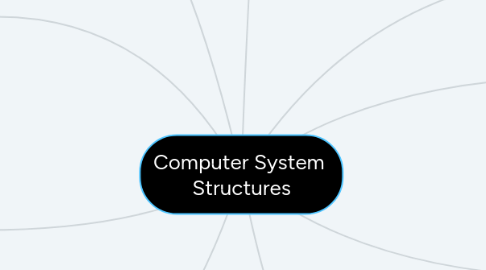
1. Storage Structure
1.1. Main memory
1.1.1. only large storage media that the CPU can access directly.
1.1.2. Volatile
1.2. Secondary storage
1.2.1. extension of main memory that provides nonvolatile storage capacity.
1.2.2. Non-volatile
2. Storage Hierarchy
2.1. Speed
2.2. Cost
2.3. Volatility
3. Modes of Operation
3.1. User Mode
3.1.1. user program executes in user mode
3.1.2. certain areas of memory are protected
3.1.3. certain instructions may not be executed
3.2. Kernel Mode
3.2.1. monitor executes in kernel mode
3.2.2. • privileged instructions may be executed
3.2.3. protected areas of memory may be accessed
4. Dual-Mode Operation
4.1. When an interrupt or fault occurs, hardware switches to kernel mode.
5. Computer-System Operation
5.1. A general-purpose computer system consists of one or more CPUs and a number of device controllers.
6. Interrupt Handling
6.1. When the CPU is interrupted, it stops what it is doing and immediately transfers execution to a fixed location.
7. Synchronous I/O Structure
7.1. Wait instruction idles the CPU until the next interrupt
7.2. Wait loop
7.3. At most one I/O request is outstanding at a time
8. Asynchronous I/O Structure
8.1. Without waiting for I/O completion.
8.2. System call
8.3. OS indexes into I/O device table to determine device status and to modify table entry to include interrupt.
9. Protection
9.1. I/O
9.1.1. user program cannot issue I/O instructions directly
9.2. Memory
9.2.1. Base register
9.2.2. Limit register
9.3. Hardware Address
9.3.1. When executing in kernel mode, the operating system has unrestricted access to both monitor and user’s memory.
9.4. CPU
9.4.1. Timer
9.4.1.1. When timer interrupts, control transfers to the operating system.
9.4.1.2. Load-timer is a privileged instruction.

